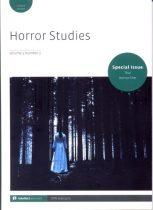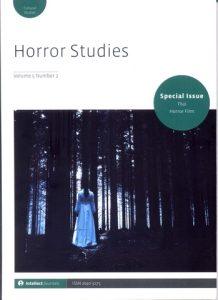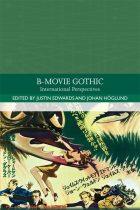
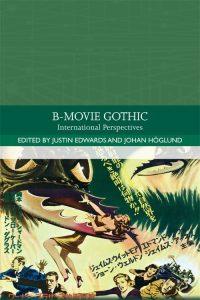 Category III films, introduced to Hong Kong audiences in 1988 as part of the new ratings system, were originally defined as productions reserved for adults over age eighteen. With the majority of plots focusing on stories of murder and sexual exploitation they were often dismissed as mindless low-budget gore-porn created solely for the purpose of generating quick profit for the producers and distributors. Such criticism did little to affect the films’ ratings, as the productions often met with favourable audience reviews and launched mainstream careers of some of their stars. The films also attracted limited academic attention, praised for their naturalistic rendering of the harsh social realities of the lower class life in the 1990s Hong Kong.
Category III films, introduced to Hong Kong audiences in 1988 as part of the new ratings system, were originally defined as productions reserved for adults over age eighteen. With the majority of plots focusing on stories of murder and sexual exploitation they were often dismissed as mindless low-budget gore-porn created solely for the purpose of generating quick profit for the producers and distributors. Such criticism did little to affect the films’ ratings, as the productions often met with favourable audience reviews and launched mainstream careers of some of their stars. The films also attracted limited academic attention, praised for their naturalistic rendering of the harsh social realities of the lower class life in the 1990s Hong Kong.
Although abounding in excessive depictions of violence, HK Category III films are rarely categorized as horror, spanning multiple genres from erotic fantasy and action to crime story and social drama. Frequently with the city at their centre, they reject depictions of Hong Kong as the gleaming symbol of economic prosperity opting for the dystopian vision of crime-infested dark alleys, overpopulated estates and dirty restaurants serving dumplings made from human flesh – a suitable setting for the development of a local brand of urban Gothic.
This article returns to the discussion of the social and cultural dimension of HK Category III films and proposes a Gothic reading of the films’ violent transgressions instigated by, but also directed at monstrous “others” defined by their class, political ideology, and gender. The article focuses on selected crime dramas made mostly in the 1990s, at the time where the category was at the peak of its popularity. The paper explores the films’ engagement with the topic of racism, sexual abuse, family violence, class inequality, as well as political tensions related to the 1997 Hong Kong Handover. The paper also discusses the films’ contribution to the visualisation of Hong Kong as one of the most enduring Asian Gothic cities.
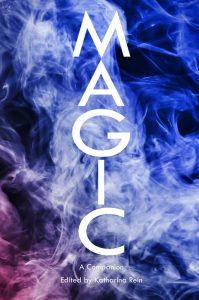 Khmer magic holds a prominent place in Thai imaginary and is often portrayed in films. This article will discuss the most common portrayals of Khmer black magic in Thai popular cinema – from horror films to action and adventure genres. The main films discussed here will be the Art of the Devil trilogy (Khon len khong, 2004, Long khong, 2005, and Long khong 2, 2008), with references also made to such productions like Necromancer (Chom khamang wet, 2005) and Khun Pan (2016) and Khun Pan 2 (2018). The article argues that while the cinematic portrayals of Khmer magic provide opportunities to engage in a graphic spectacle of violence, their depictions are also consequently gendered, with female practitioners being labelled as ‘evil’ and male practitioners using magic to assert their masculinity.
Khmer magic holds a prominent place in Thai imaginary and is often portrayed in films. This article will discuss the most common portrayals of Khmer black magic in Thai popular cinema – from horror films to action and adventure genres. The main films discussed here will be the Art of the Devil trilogy (Khon len khong, 2004, Long khong, 2005, and Long khong 2, 2008), with references also made to such productions like Necromancer (Chom khamang wet, 2005) and Khun Pan (2016) and Khun Pan 2 (2018). The article argues that while the cinematic portrayals of Khmer magic provide opportunities to engage in a graphic spectacle of violence, their depictions are also consequently gendered, with female practitioners being labelled as ‘evil’ and male practitioners using magic to assert their masculinity.

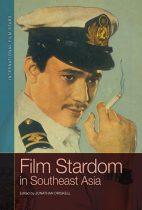
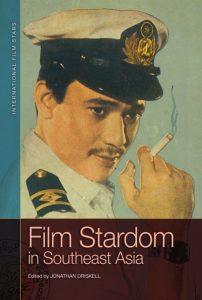 This chapter examines the specific positioning of martial arts stars within cinema and investigates the gendered construction of the female martial artist. It discusses the development of the muay thai film as a specifically Thai contribution to martial arts cinema and the genre’s vindication of the ideological construction of muay thai as an expression of heroic masculinity and patriotism. The chapter focuses on Jeeja Yanin to examine how the introduction of a female muay thai star affects the heroic/nationalistic narrative of Thai muay thai cinema and how this, in turn, affects the construction of Jeeja’s star image.
This chapter examines the specific positioning of martial arts stars within cinema and investigates the gendered construction of the female martial artist. It discusses the development of the muay thai film as a specifically Thai contribution to martial arts cinema and the genre’s vindication of the ideological construction of muay thai as an expression of heroic masculinity and patriotism. The chapter focuses on Jeeja Yanin to examine how the introduction of a female muay thai star affects the heroic/nationalistic narrative of Thai muay thai cinema and how this, in turn, affects the construction of Jeeja’s star image.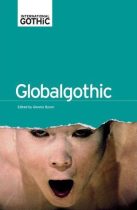
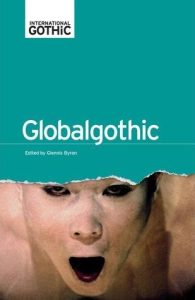 If we agree that globalization translates into a quick and massive flow of capital, people, products, services and ideas across borders then cinema has been a global enterprise since its very beginnings. While local film industries may not share the global distributing potential of Hollywood, this does not mean that their production and post-production methods lag behind. The case of Thai film is not so different here, negotiating the dynamics of the global (e.g. filming equipment, skilled crew, or distribution formats) and the local (e.g. conceptualization, scriptwriting, or narrative formation). Contemporary Thai horror film has long been Thailand’s calling card on international film markets. Known in Thai as nang phi (ghost films), the films remain faithful to their narrow supernatural formula focusing most commonly on the figure of a vindictive phi tai hong (a spirit of the violently dead). Recently, however, the familiar anthropomorphic renditions of ghosts known from older Thai horror films seem to undergo the steady process of de-materialization and de-literalization, challenged through the intervention of technology and reappearing as critically constructed metaphors. This article argues that this change in the way these ghosts are portrayed on film can be seen as a result of the increasing globalization of Thai film industry per se, as well as a reflection on the broader economic, political and social transformations brought about by the powers of globalization in Thailand.
If we agree that globalization translates into a quick and massive flow of capital, people, products, services and ideas across borders then cinema has been a global enterprise since its very beginnings. While local film industries may not share the global distributing potential of Hollywood, this does not mean that their production and post-production methods lag behind. The case of Thai film is not so different here, negotiating the dynamics of the global (e.g. filming equipment, skilled crew, or distribution formats) and the local (e.g. conceptualization, scriptwriting, or narrative formation). Contemporary Thai horror film has long been Thailand’s calling card on international film markets. Known in Thai as nang phi (ghost films), the films remain faithful to their narrow supernatural formula focusing most commonly on the figure of a vindictive phi tai hong (a spirit of the violently dead). Recently, however, the familiar anthropomorphic renditions of ghosts known from older Thai horror films seem to undergo the steady process of de-materialization and de-literalization, challenged through the intervention of technology and reappearing as critically constructed metaphors. This article argues that this change in the way these ghosts are portrayed on film can be seen as a result of the increasing globalization of Thai film industry per se, as well as a reflection on the broader economic, political and social transformations brought about by the powers of globalization in Thailand.
 Category III films, introduced to Hong Kong audiences in 1988 as part of the new ratings system, were originally defined as productions reserved for adults over age eighteen. With the majority of plots focusing on stories of murder and sexual exploitation they were often dismissed as mindless low-budget gore-porn created solely for the purpose of generating quick profit for the producers and distributors. Such criticism did little to affect the films’ ratings, as the productions often met with favourable audience reviews and launched mainstream careers of some of their stars. The films also attracted limited academic attention, praised for their naturalistic rendering of the harsh social realities of the lower class life in the 1990s Hong Kong.
Category III films, introduced to Hong Kong audiences in 1988 as part of the new ratings system, were originally defined as productions reserved for adults over age eighteen. With the majority of plots focusing on stories of murder and sexual exploitation they were often dismissed as mindless low-budget gore-porn created solely for the purpose of generating quick profit for the producers and distributors. Such criticism did little to affect the films’ ratings, as the productions often met with favourable audience reviews and launched mainstream careers of some of their stars. The films also attracted limited academic attention, praised for their naturalistic rendering of the harsh social realities of the lower class life in the 1990s Hong Kong.